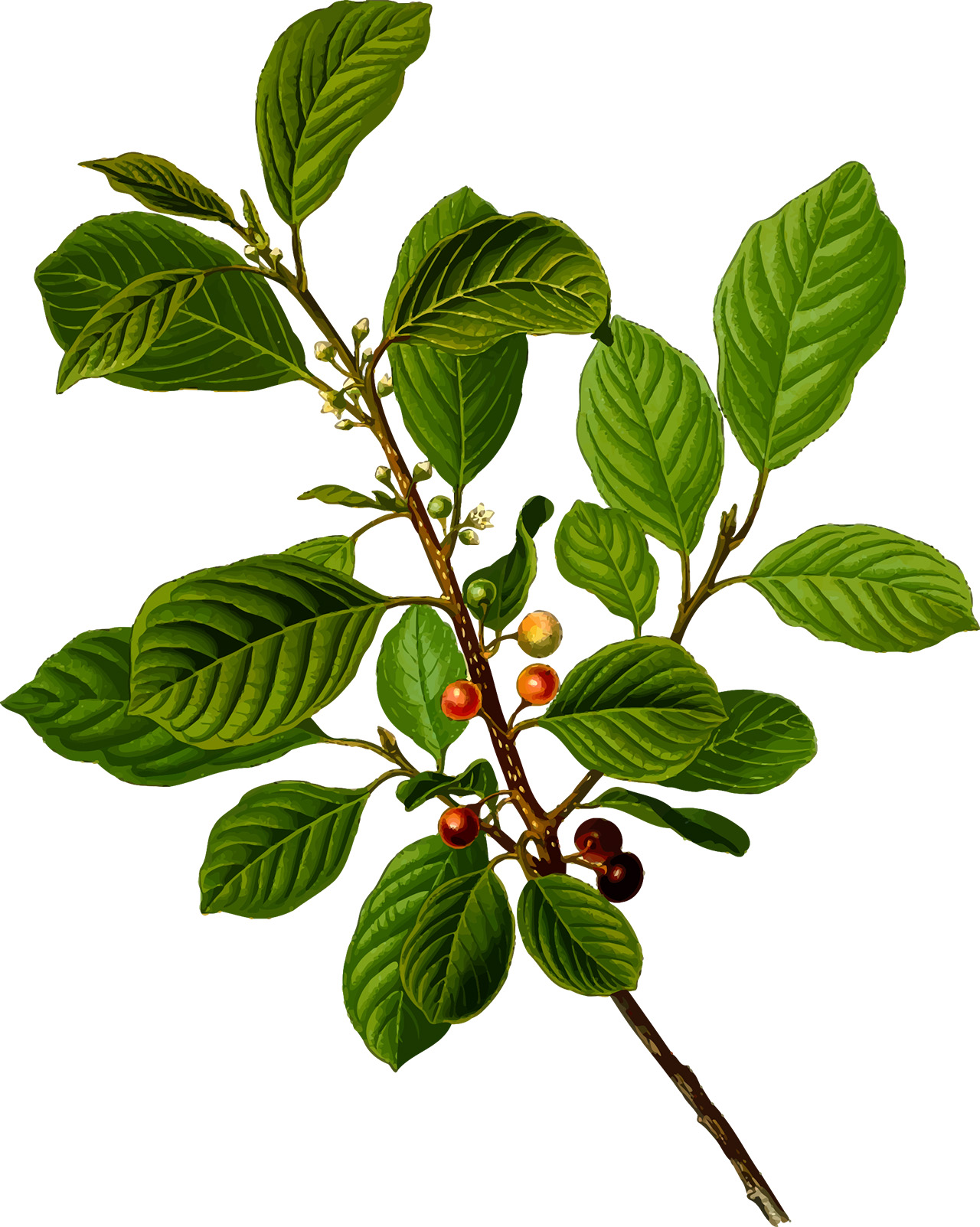Glossy buckthorn
Glossy buckthorn has been growing on Fishers Island for so long that most people think that it is a native – but it isn’t. Growing throughout Eurasia and northern Africa, buckthorn was brought to the US during the1800s and planted as an ornamental and windbreak.
It is a significant conservation problem. It has been found to:
- Decrease soil pH
- Lower the water table
- Increase decomposition rates, decreasing the number of vegetative hummocks
- Decrease light availability to the understory and shade out native species
- Decrease graminoid (e.g. grasses, sedges) relative abundance
- Cause potential allelopathic effects similar to common buckthorn
- Decrease total plant cover and reduce recruitment and survival of native saplings
including economically valuable hardwoods - Alter pollinator communities in abundance and diversity
- Harm songbird habitats
- Create an acceptable environment for exotic earthworms
Making matters worse, it is extraordinarily difficult to eradicate without herbicides since cut stumps quickly resprout multiple stems from the root crown. Even prolonged cutting twice during a growing season has no long term effect and may promote root development.
Sources:
https://www.fs.usda.gov/database/feis/plants/shrub/fraaln/all.html
https://mitppc.umn.edu/research/research-projects/cover-it-using-plants-control-buckthorn


